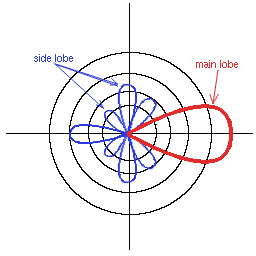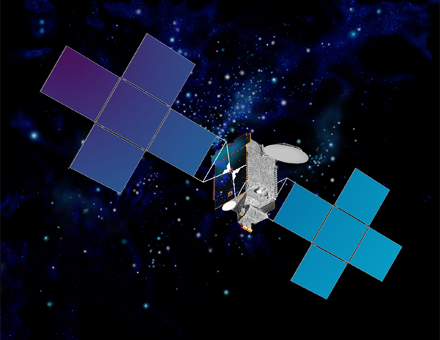Antennas
Most simply, an antenna (U.S.) or aerial (UK) is an electronic component designed to transmit or receive radio waves. The words "antenna" and "aerial" are used throughout this article with precisely the same meaning. more...
More specifically, an antenna is an arrangement of conductors designed to radiate (transmit) an electromagnetic field in response to an applied alternating electromotive force (EMF) and the associated alternating electric current.
Alternatively, if an antenna is placed into an electromagnetic field, that field will induce an alternating current upon the antenna, and EMF between its terminals. See radio frequency induction.
Overview
There are two fundamental types of antennas, which, with reference to a specific three dimensional (usually horizontal or vertical) plane, are either omni-directional (radiate equally in the plane) or directional (radiates more in one direction than in the other). All antennas radiate some energy in all directions but careful construction results in large directivity in certain directions and negligible power radiated in other directions.
By adding additional conducting rods or coils (called elements) and varying their length, spacing, and orientation, an antenna with specific desired properties can be created, such as a Yagi-Uda Antenna (often abbreviated to "Yagi"). Typically, antennas are designed to operate in a relatively narrow frequency range. The design criteria for receiving and transmitting antennas differ slightly, but generally an antenna can receive and transmit equally well. This property is called reciprocity.
The vast majority of antennas are simple vertical rods a quarter of a wavelength long. Such antennas are simple in construction, usually inexpensive, and both radiate in and receive from all horizontal directions (omnidirectional). One limitation of this antenna is that it does not radiate or receive in the direction in which the rod points. This region is called the antenna blind cone or null.
Antennas have practical use for the transmission and reception of radio frequency signals (radio, TV, etc.), which can travel over great distances at the speed of light, and pass through nonconducting walls (although often there is a variable signal reduction depending on the type of wall, and natural rock can be very defective to radio signals).
Antenna parameters
There are several critical parameters that affect an antenna's performance and can be adjusted during the design process. These are resonant frequency, impedance, gain, aperture or radiation pattern, polarization, efficiency and bandwidth. Transmit antennas may also have a maximum power rating, and receive antennas differ in their noise rejection properties.
Resonant frequency
The resonant frequency is related to the electrical length of the antenna. This is usually the physical length of the wire multiplied by the ratio of the speed of wave propagation in the wire. Typically an antenna is tuned for a specific frequency, and is effective for a range of frequencies usually centered on that resonant frequency. However, the other properties of the antenna (especially radiation pattern and impedance) change with frequency, so the antenna's resonant frequency may merely be close to the center frequency of these other more important properties.
Read more at Wikipedia.org




